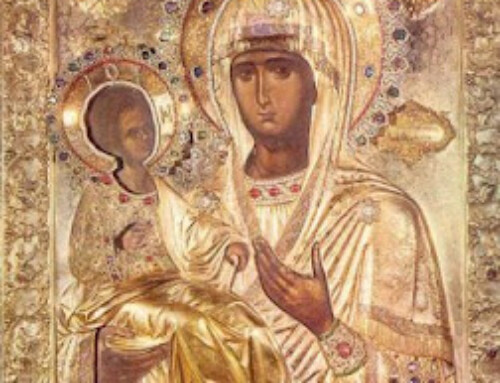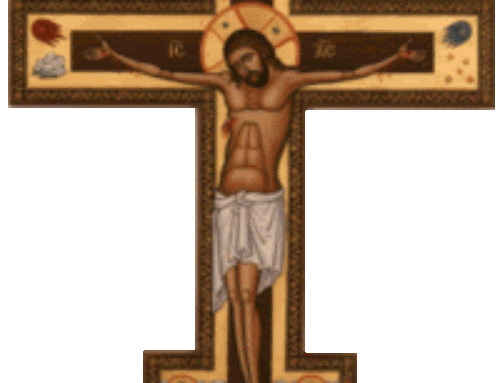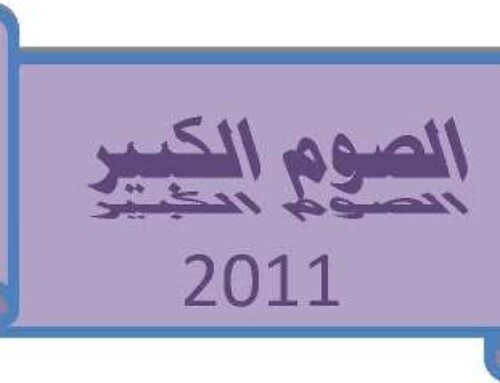Word Magazine February, 1958 Page 7/26
THE IKONOSTASIS
Its meaning in the celebration of Divine Liturgy
In Eastern Orthodox Churches everywhere
by FR. MICHAEL BUBEN
Every Orthodox Christian upon entering his Holy Temple for worship sees first a partition dividing the Sanctuary (altar) from the central Body of the building. What is the story for this partition called Ikonostasis?
The Ikonostasis, its present form and ritualistic purpose is a development in the Church, which traces its foundation to the beginning of Old Testament History. During the Theocratic reign of the Hebrews, God Himself, through the lineage of Abraham (Exodus 25, 1-4: Chronicles 28, 19) and Abraham’s descendants, gave instructions and laws by which mankind could receive redemption from the downfall. We read the following instructions given by God to Moses –
“And thou shalt make a vail of blue, and purple, and scarlet, and fine twined linen of cunning work: with cherubims shall it be made. And thou shalt hang it on four pillars of shittim wood overlaid with gold: their hooks shall be of gold upon the four sockets of silver. And thou shalt hang up the vail under the taches, that thou mayest bring in thither within the vail the ark of the testimony: and the vail shall divide unto you between the holy place and the most holy” (Exodus 26, 31-33).
We learn that the ARK was to be placed behind the vail with an altar on which were to be placed two golden Cherubims who were to guard the Ark of the Testament with their wings. The curtain (vail) was to divide the Holy Place from the Holy of Holies! (Sanctum a Sancto Sanctorom.
Accordingly in the temple of Solomon on Mount Moriah, (2 Chronicles 3, 1), the holy place was divided from the Holy of Holies by a vail or curtain. In Hebrew the word for curtain is FARAKET, in Greek ifs called KATAPETAZMA. All later temples were built in similar form, always with the use of a curtain. It was this curtain, which in the instant of Our Savior’s death, was ripped vertically into two. This signified that the ritual and law of the Old Covenant would now be replaced and fulfilled by the ritual and law of the New Covenant.
In the early period of Christianity, strong- doors were erected before the curtain to keep the worshippers away from the Eucharist during certain periods, and to guard against the pagan persecutors of the faith.
The Council of Laodikea (Law 44) especially forbids women from entering the Sanctuary, and Law 19 stipulates that only properly ordained clergymen may partake of the Holy Communion in the Sanctuary. Saint Ambrose is historically recorded for his refusal to allow the Emperor Theodosios the Great to partake of the Holy Eucharist in the Sanctuary. (Altar)
The Great Simion of Thessalonica wrote: “In a church everything is not permissible for everyone. The Church is composed of two parts—the revealed and the sacramental.” There are many symbolic reasons why the curtain is opened and closed during portions of the Divine Liturgy. Among these reasons :—sacramental curtains are closed to the laymen, until after prayer the blessing and grace of God reveal the mystery: or, the unknown can be revealed through faith; or, the Mystery which is being performed should be seen through “spiritual eyes.” In the early days of Christian worship, the FARAKET was used to hide portions of the services from the skepticism of pagans and catechumens who were not yet prepared to be baptized.
The full development of the ikonostasis and its symbolism as we know it today is difficult to trace exactly to any one source. From the word itself we can imagine that the practice became fully developed after the Edict of Milan, when Christians were first permitted to worship openly without constant persecution.
Everything in the Sanctuary is ritualistically symbolic of the invisible heavenly kingdom. Let us then say that the elevated Sanctuary with its Throne (altar table), Table of Oblation for preparing the Host from our Bread Offering, ARK for the Reserved Sacrament, and all other implements help us to comprehend the heavenly state. The Body of the church where the worshippers gather, we then imagine as Earth or the visible world. During our Divine Liturgy, the Great Entrance portrays the final appearance of Our Redeemer coming from (North Door) on earth, among men and then His entombment after Crucifixion, when the Holy Doors are closed. Next we symbolically have the Resurrection and Ascension in the final portion of the Liturgy. Orthodox Christians began early to surround the Holy Doors with ikons to illustrate and depict events for the instruction of the masses of catechumens learning Holy Scripture and Holy Tradition.
We know historically, a full development in the use of icons was reached before the Eight Century. The history of the Eastern Orthodox Church thunders with battles against the iconoclasts (a group who were against the use of icons) for over 116 years beginning with the year 726 AD. The Seventh Ecumenical Council convened in the year 787 at Nicea to settle this controversy for all time. The three hundred and more Holy Fathers of this Seventh Council, from every part of the Christian world, discussed the basis for the use of icons. They gathered
facts from sacred Scripture and Tradition which confirmed that icons were appropriate. They discussed the Dogmatic Law pertaining to the Second Person of the Holy Trinity—Our Savior. The Church teaches the Incarnation of Our Savior, therefore it is more than necessary to picture Him in human form for human comprehension. Icons are to be venerated as the Holy Cross and Relics are venerated. The honor and worship is given to the subject depicted and not to the icon. This decision of the Seventh Ecumenical Council was to be acknowledged and defended as long as the Church exists on earth.
Let’s review an average Ikonastasis and find the various icons which compose it. Material used in construction may vary from wood, to steel, to marble, with wood being the most predominant in American Churches.
First row beginning with the Royal or Holy Doors. Icons on the Holy Doors depict the Annunciation (Archangel Gabriel appearing to the Holy Theotokos—St. Luke, 26). In the four corners of the doors are the four Evangelists—Matthew, Mark, Luke, and John. These icons tell us that by God’s mercy and grace we receive salvation through the Incarnation of the Son of God—and that the message was preached to the four corners of the earth by the written word of the Evangelists who gave us the glad-tidings in what we know as Gospels.
To the right side of the doors always is the icon of Our Savior, and to the left is the icon of the Theotokos holding the Christ-child. On the smaller North and South Doors are placed the icons of one of the archdeacons— Stephen, Aaron, Melhesedek, or Archangels Michael or Gabriel. To the right of the South Door is placed the icon depicting the Saint or Event after whom the local parish is named. To the left of the North Door is depicted the Saint most popular in a specific geographical area by the forefathers of local parishioners. Among them are—St. Peter and St. Paul, St. George, St. John the Baptist, St. Nicholas, St. Elias, etc.
Second Row directly over the Holy Doors we place the icon of the Last Supper for it was at the Last Supper that the Mystery of Communion was instituted by Our Lord. On either side of the Last Supper, from wall to wall, we find icons depicting the Twelve Major Feasts of the Christian Year.
In the Third Row we find icons of the twelve Apostles sometimes placed in groups of two.
In the Fourth Row we find icons of Prophets who foretold the coming Messiah. In the center of the third and fourth rows is a large icon of Jesus Christ—NIKA sitting or standing by a Throne, a symbol of Christ King Triumphant.
Here then is a brief story about our Ikonastasis.
Fr. Michael Buben is pastor of St. Michael’s Church, Geneva, N.Y.
Pastor, St. Michael’s Church, Geneva, N.Y.





